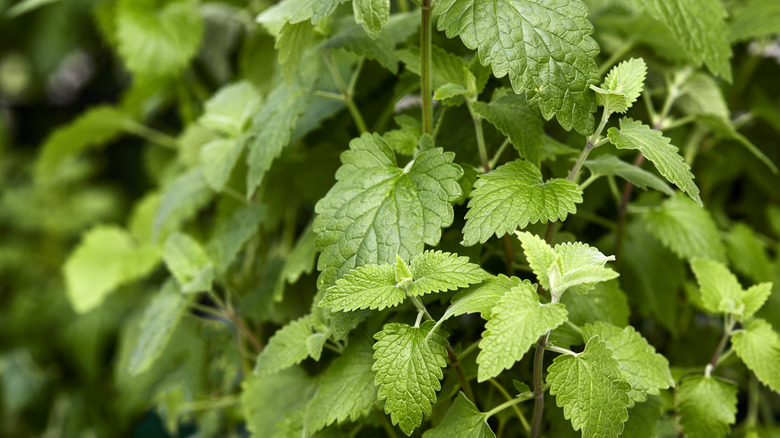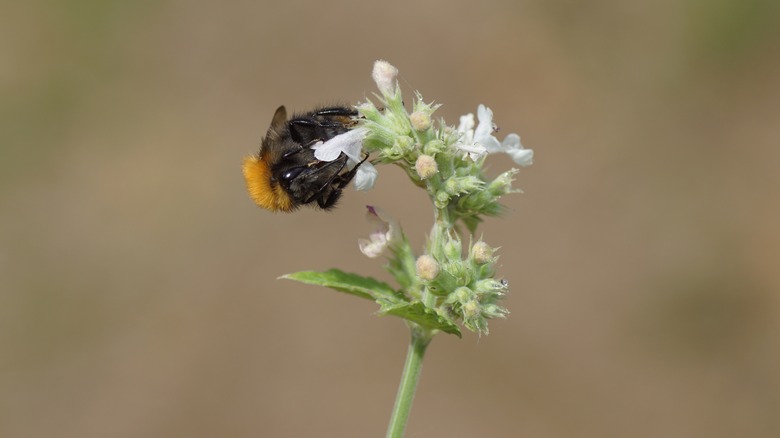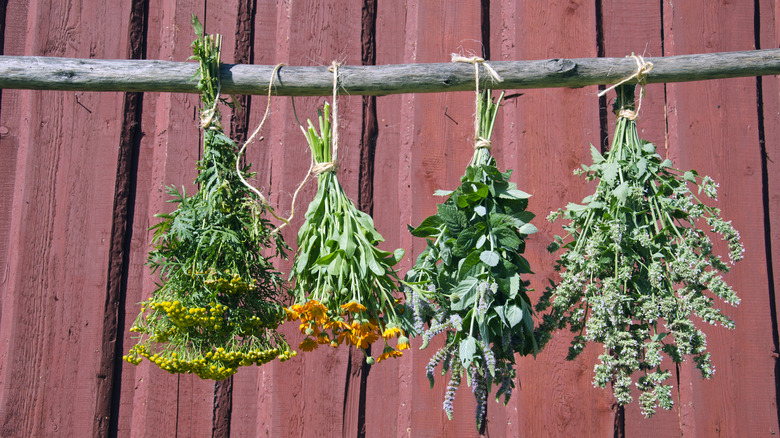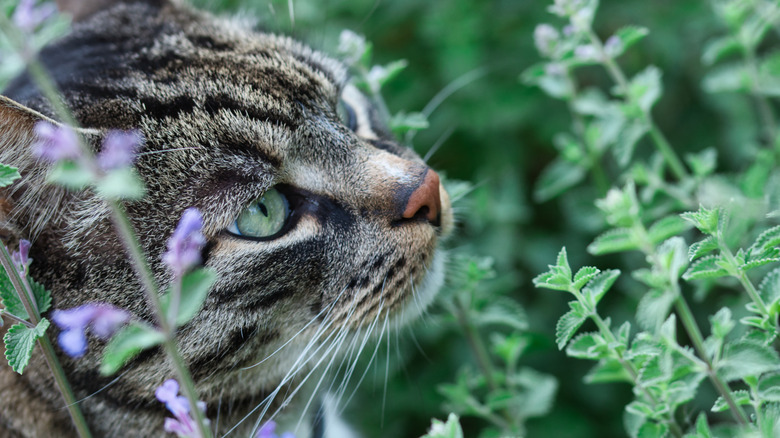Why You Should Grow Catnip Even If You Don't Have Cats
If you don't have kitties, it may seem like there's no point in growing catnip, since that's all it's good for, right? Au contraire, mon ami! Catnip is as helpful in the garden as it is in the home, and enjoying playtime with your cats is just one of its many uses. This hardy, pretty landscape plant attracts all kinds of pollinators and can be used as a calming herb in the kitchen.
Catnip (Nepeta cataria) is a member of the mint family, and while it will spread, it won't take over like mint will. It is easy to successfully grow a catnip plant as a perennial in USDA hardiness in zones 3 through 9. I have grown catnip in the ground, but to ensure it doesn't accidentally get chopped down by overzealous weed whacking, I'm now growing it in a large container. This plant grows up to around 3 feet tall, making it a nice addition to bare spots in the landscape that would benefit from a bit of height. Catnip will reproduce by seed, so if you don't want even more catnip in your landscape, you can pinch off the flowers before they completely fade to prevent the plant from dropping seeds.
Attract plentiful pollinators
Although catnip isn't often grown for its somewhat unimpressive blooms, those little flowers atop each stem attract a variety of pollinators. In the summer, catnip produces a cluster of tight little buds, which expand and grow into bottlebrush-shaped bloom spikes. Each of these mature to expose pretty little bilabiate flowers. This type of bloom consists of an upper and lower lip which are mostly found in bee balm, salvias, and other members of the mint family beloved by beneficial insects.
The tube shape of a bilabiate flower makes it extra attractive to pollinators like bees, butterflies, and hummingbirds. The proboscises — sucking mouthparts — of these amazing creatures can reach into that tube to enjoy the nectar without picking up too much pollen. Even species without those specialty feeding features may partake in the nectar of these plants by making holes in the petals and feasting on the sugary substance within.
Herbs for the home
The benefits of catnip extends beyond wildlife and domestic kitties. It also has some human uses. Just like we grow herbs to season our meals, we can grow catnip to make tea. According to WebMD, using catnip for a number of ailments is nothing new. Historically, homemade tea was used to treat digestive issues and coughs, as well as for its calming properties. While there haven't been many studies on the health benefits of catnip for humans, we do know it contains the antioxidants caffeic, rosmarinic, and coumaric acid. In short, catnip tea might just make you feel a little calmer by giving your body a healthy boost.
You can use fresh or dried catnip for tea by harvesting the stems once they're about 2 feet tall throughout the summer, or wait until fall and harvest the entire plant. Rinse the leaves to remove dirt and debris, then bind the bottom of the stems. I like to use rubber bands because when the stems dry, they shrink and may fall out if they are bound by string. Hang your bundle of catnip stems in a warm, dry place and harvest the leaves when they crumble easily between your fingers.
For the fabulous felines
As a cat person (don't tell my dogs), I can't write this piece without including the benefits of growing catnip for your furry friends. If you do have cats, they'll enjoy this addition to your garden. Just keep in mind that if you are harvesting catnip for your own uses, you need to be prepared to share. The chemical nepetalactone causes a euphoric feeling when cats rub, lick, or chew on it. If you're harvesting catnip for a calming tea, or just trimming it back because it's gotten too tall for your landscape, that pheromone-like scent will be on your hands. If your cats are like mine, they will not leave you alone unless you share a few fresh leaves with them, wash your hands, and possibly even change clothes! I can't say that I mind the extra attention, but I don't want to trip over my kitties.
Treat your cat to fresh or dried catnip to encourage play, an activity that's as fun for them to do as it is for us to watch. You can also rub catnip on new scratching posts or beds to make them more attractive for kitties — and hopefully to prevent the need to repair a door that's covered in pet scratches!




